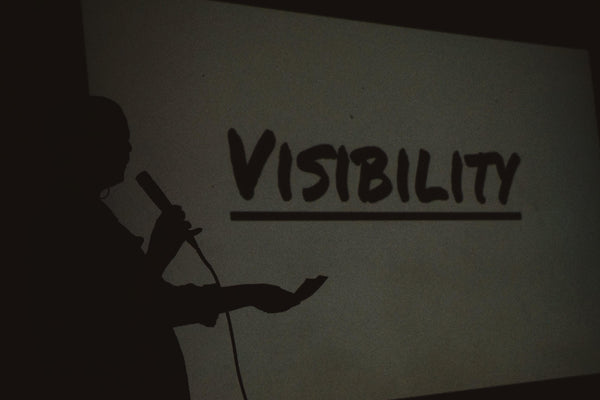S1 and Kat Salas Team up to Build Visibility for the Sex Industry with "How to Talk like a Stripper"

I felt completely changed climbing the stairs back up from the basement of a Rite-Aid Thursday evening. S1, an artist-run gallery and event space that occupies this basement space hosted an event called “How to Talk Like a Stripper” that evening. In less than two hours, my understanding of the sex industry changed drastically. I went in with an open mind, but was admittedly unaware of most of the content that was covered in the discussion.
The event began with an introduction and presentation by Kat Salas, in which she shared why she is interested in expanding visibility. Salas explained her connection to the industry: she is a stripper. Salas took the audience through slides touching on how the general public perceives strippers. This was followed by a Q&A session with a panel of women who have chosen to be sex workers.

The first question was related to the destigmatization of sex work. “How do you educate the general public?” Through education and visibility, social and political barriers can be lessened. Go to protests. Participate and become an active member of your community if you’re not already doing so. Remember to not speak over the experiences of sex workers.

“What is the age range for strippers?” This question was not directly answered, but transitioned into the panelist outlining a few reasons why someone would get into stripping. One panelist stated that some dancers want to live out exhibitionist fantasies, while many get into the job just for the money. The first step is getting an audition, which is usually just working a shift.
“You’re on your own”.
One panelist stated that you’re expected to watch and learn from the other dancers. Some are lucky enough to be taken under an experienced dancer’s wing. One panelist left a club because of how unsafe the conditions were. A regular who had been given the nickname “Fingers” was notorious for trying to touch the dancers. He was able to walk in and out of the club whenever he wanted.
Two of the panelists started to explain the careful dance of naturally adapting in that environment, going about their business without stepping on the toes of other dancers’ and management. An important reality of the job is the hustle for private dances. Stage dancing is not where a bulk of their income comes from.
“The attitude you walk in with is how much money you’ll make in the club.”
“Half of our job is dancing and the other part is being a therapist. They don’t even want the dance.”
“There is an individualistic hustle you have to develop. You don’t learn it overnight.”
“What does racism look like in Portland clubs?” Fetishization from customers is a normal part of the job. The panelists could not speak with certainty how often dancers from diverse backgrounds are turned away because of their ethnicity.
“What benefits do strippers get?” The panelists laughed at this question, and I could sense a nervous tension in the audience. Dancers are independent contractors and although they are still considered employees of the clubs they work with, there is no protection.
“What does the industry look like for male dancers?” One panelist shared her experiences just from talking to dancers who work at Silverado. Because there are not many clubs like this, she said they make more money and find customers who appreciate their job. On the other hand, a panelist mentioned some get treated with more aggression.
“What are questions you should never ask a stripper?” Don’t ask how long they’ve been working there. Don’t ever ask how much money they make. Don’t ask what else they do or if they go to school or if this is all they’re doing with their lives. Don’t ask what kind of girl or what kind of boy they are. Don’t make a statement about how you love all strippers or how you hate all strippers. Don’t ask to kiss or touch, even just once. There is nothing you can do to see a dancer outside of the club, so that question is inappropriate. You don’t need to know their real name.
Ending on a positive note, an audience member asked each panelist how stripping has changed their lives for the better.
“When I started dancing, it was the first time I heard several people talking about how beautiful I look. I started to actually feel beautiful. I’ve become more comfortable in my own skin.”
“I struggled with body image and it wasn’t until I started dancing that I felt comfortable and familiar with myself. It was beautiful, eye-opening and very personal.”
“I’m a businesswoman now. Every shift is a sales class.”
“This helped me learn how to talk to people even better.”
“I saw strong and powerful women all around me. It was the first time in my life I felt good being a woman.”
I won’t ever forget one panelist diving into the beginning. She shared about her childhood, growing up for the first two years of her life thinking she was a boy. She lived on and off the streets with her mother. It took her getting a job in the sex industry to conquer two things that brought her to tears: accepting and loving herself as a woman and being able to provide herself with basic needs.
The mere fact that an event like this existed and that it turned into a full room of people who were curious and interested in improving this specific industry gave me hope that there are improvements to come. Through active participation and open minds, we are able to make a change. This is really just the beginning.

You can find out more information from the links below:
http://www.pdxstripperlibrary.org/
“Sex Workers Rights” workshop event on July 20th:
https://www.facebook.com/events/541590902694822/
Stripper Field day event on July 24th:
https://www.facebook.com/events/520913394759395/
S1 Gallery space:



